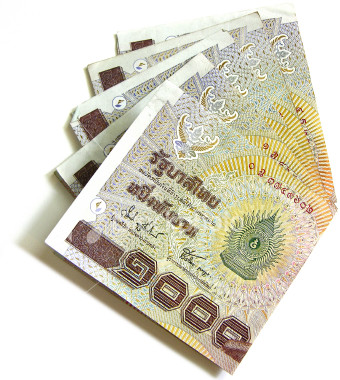ชื่อเรื่อง การพัฒนารูปแบบการจัดประสบการณ์แบบบูรณาการเพื่อส่งเสริมทักษะ
การเรียนรู้ของเด็กปฐมวัยชั้นอนุบาลปีที่ 3
ผู้วิจัย นางไหมละโฉม หละสัน
ปีการศึกษา 2558
บทคัดย่อ
การพัฒนารูปแบบการจัดประสบการณ์แบบบูรณาการเพื่อส่งเสริมทักษะการเรียนรู้ ของเด็กปฐมวัยชั้นอนุบาลปีที่ 3 โรงเรียนเทศบาล ๑ บ้านสะเดา สังกัดเทศบาลเมืองสะเดา อำเภอสะเดา จังหวัดสงขลา ครั้งนี้มีวัตถุประสงค์ 1) เพื่อศึกษาและวิเคราะห์ข้อมูลเกี่ยวกับการจัดประสบการณ์แบบบูรณาการเพื่อส่งเสริมทักษะการเรียนรู้ของเด็กปฐมวัยชั้นอนุบาลปีที่ 3 2) เพื่อพัฒนาและหาประสิทธิภาพของรูปแบบการจัดประสบการณ์แบบบูรณาการเพื่อส่งเสริมทักษะ การเรียนรู้ ของเด็กปฐมวัยชั้นอนุบาลปีที่ 3 3) เพื่อเปรียบเทียบผลสัมฤทธิ์ทางการเรียนของเด็กปฐมวัยชั้นอนุบาลปีที่ 3 ที่เรียนด้วยรูปแบบการจัดประสบการณ์แบบบูรณาการเพื่อส่งเสริมทักษะการเรียนรู้ ของเด็กปฐมวัยชั้นอนุบาล ปีที่ 3 4) เพื่อศึกษาความพึงพอใจของเด็กปฐมวัยชั้นอนุบาลปีที่ 3 ที่มีต่อการเรียนโดยใช้รูปแบบการจัดประสบการณ์แบบบูรณาการเพื่อส่งเสริมทักษะ การเรียนรู้ ของเด็กปฐมวัยชั้นอนุบาลปีที่ 3
กลุ่มตัวอย่างที่ใช้ในการวิจัยเป็นเด็กปฐมวัยชั้นอนุบาลปีที่ 3/1 โรงเรียนเทศบาล ๑ บ้านสะเดา สังกัดเทศบาลเมืองสะเดา อำเภอสะเดา จังหวัดสงขลา ภาคเรียนที่ 2 ปีการศึกษา 2558 จำนวน 31 คน ซึ่งได้จากการสุ่มอย่างง่าย โดยใช้ห้องเรียนเป็นหน่วยการสุ่มกลุ่มตัวอย่าง (Simple Random Sampling Unit) เครื่องมือที่ใช้ในการศึกษาคือ รูปแบบการจัดประสบการณ์แบบบูรณาการ เพื่อส่งเสริมทักษะการเรียนรู้ PLSE Model เครื่องมือที่ใช้ในการรวบรวมข้อมูลประกอบด้วย 1) แผนการจัดประสบการณ์แบบบูรณาการเพื่อส่งเสริมทักษะการเรียนรู้ จำนวน 24 แผน 2) แบบ ทดสอบผลสัมฤทธิ์ทางการเรียน จำนวน 3 ชุดๆ ละ 10 ข้อ รวม 30 ข้อ มีค่าความยากง่ายระหว่าง 0.20 - 0.80 ค่าอำนาจจำแนกตั้งแต่ 0.20 - 1.00 ค่าความเชื่อมั่นของแบบทดสอบเท่ากับ 0.83 0.82 และ 0.79 ตามลำดับ 3) แบบประเมินความพึงพอใจ มีลักษณะเป็นมาตราส่วนประมาณค่า 3 ระดับ จำนวน 10 ข้อ มีค่าความเชื่อมั่นเท่ากับ 0.89 สถิติที่ใช้ในการวิเคราะห์ข้อมูลคือ ค่าเฉลี่ย ( ) ค่าเบี่ยงเบนมาตรฐาน (S.D) การทดสอบค่าที (t - test) แบบ Dependent Group
ผลการวิจัยพบว่า
1. จากการวิเคราะห์ข้อมูลเกี่ยวกับนโยบาย เป้าหมาย ของการจัดการศึกษาในระดับปฐมวัย พบว่า มีสภาพที่คาดหวังคือมุ่งปฏิรูปการเรียนรู้ โดยยึดหลักผู้เรียนเป็นศูนย์กลาง จัดเนื้อหาสาระและกิจกรรมให้สอดคล้องกับความสนใจและความแตกต่างของผู้เรียน โดยมีการบูรณาการผสมผสานสาระความรู้ด้านต่าง ๆ อย่างได้สัดส่วน สมดุล และมีการฝึกทักษะกระบวนการคิด การจัดการ การเผชิญสถานการณ์ การฝึกปฏิบัติ ลงมือทำ และการประยุกต์ความรู้ไปใช้ เพื่อป้องกันและแก้ไขปัญหา รวมทั้งปลูกฝังคุณธรรม ค่านิยมที่ดีงาม และประสานความร่วมมือกับผู้ปกครองและชุมชน เพื่อร่วมกันพัฒนาผู้เรียนตามศักยภาพ
2. รูปแบบการจัดประสบการณ์แบบบูรณาการ เพื่อส่งเสริมทักษะการเรียนรู้ ที่พัฒนาขึ้น มีชื่อว่า PLSE Model ประกอบด้วย 4 ขั้นตอนดังนี้ 1) ขั้นเตรียมความพร้อมและกระตุ้นแรงจูงใจในการเรียน (Preparation and Motivation Stage : P) 2) ขั้นเรียนรู้โดยการฝึกทักษะ (Learning by Practicing Skills Stage : L) 3) ขั้นสรุป (Summarization Stage : S) และ 4) ขั้นประเมินผล (Evaluation Stage : E) โดยรูปแบบการจัดประสบการณ์แบบบูรณาการเพื่อส่งเสริมทักษะ การเรียนรู้ ที่พัฒนาขึ้นมีประสิทธิภาพเท่ากับ 82.87/83.12
3. ผลสัมฤทธิ์ทางการเรียน ของเด็กปฐมวัยชั้นอนุบาลปีที่ 3 หลังการจัดประสบการณ์ สูงกว่าก่อนการจัดประสบการณ์โดยใช้รูปแบบการจัดประสบการณ์แบบบูรณาการ เพื่อส่งเสริมทักษะการเรียนรู้ อย่างมีนัยสำคัญทางสถิติที่ระดับ .01
4. ความพึงพอใจของเด็กปฐมวัยชั้นอนุบาลปีที่ 3 ที่มีต่อการเรียนโดยใช้รูปแบบการจัดประสบการณ์แบบบูรณาการ เพื่อส่งเสริมทักษะการเรียนรู้ อยู่ในระดับมาก
Title The Development of the Integrated Experience Model to
Promote Learning Skills of Year 3 Early Kindergarten Level Students
Researcher Mrs. Mailachom Lasan
Academic Year 2015
Abstract
The Development of the Integrated Experience Model to Promote Learning Skills of Year 3 Early Kindergarten Level Students from Tessabarn 1 School Barn Sadao under the Municipal Sadao Sadao district of Songkhla Province. The objectives of this research were as follows : 1) to study and analyze information about the integrated experience model to promote learning skills of Year 3 early kindergarten level students. 2) to develop and find the efficiency performance of the integrated experience model to promote learning skills of Year 3 early kindergarten level students. 3) to compare the academic achievement of Year 3 early kindergarten level students who studied with the integrated experience model to promote learning skills of Year 3 early kindergarten level students. 4) to study the satisfaction of Year 3 early kindergarten level students for learning by using the forms of integrated experience model to promote learning skills of Year 3 early kindergarten level students.
The sample group used in this study were children from Year 3/1 early kindergarten level from Tessabarn 1 School Barn Sadao under the Municipal Sadao district of Songkhla Province in the second semester of academic year 2015. Thirty-one students were selected using simple random sampling by using the classroom as a simple random sampling unit (Simple Random Sampling Unit) the materials used in the study is the integrated experience model to promote learning skills which is called PLSE Model. The materials used for collecting data are : 1) twenty four lesson plans which are used in the integrated experience model to promote learning skills. 2) the achievement evaluation test of three sets of 10 items each, a total of 30 items with the difficulty between 0.20 to 0.80 and discrimination from 0:20 to 1:00. The reliability of the test was 0.83, 0.82 and 0.79 respectively. 3) The satisfaction evaluation rating which is a three-level rating scale with 10 items with the conviction 0.89 statistics used for data analysis, mean ( ), standard deviation (S.D) t test (t - test) with Dependent Group.
The research results were as follows;
1. The analysis of the specific policy goals of education in the kindergarten
level was found to have a condition that is focused on learning reform that is learner-centered, managing the content and activities in line with the interests and differences of students by using the integration combining the knowledge of balanced and practicing cognitive skills to manage the situation, practical implementation and application of knowledge to use for preventing and resolving conflicts as well as cultivating virtues and good values and collaboration with parents and the community to jointly develop students potential.
2. The integrated experience model to promote learning skills which has
been developed is called PLSE Model, it consists of four steps: 1) step to prepare and motivate to learn (Preparation and Motivation Stage: P) 2) step to learn by practicing skills (Learning. by Practicing Skills Stage: L) 3) step of the conclusion (Summarization Stage: S) and 4) step of evaluation (Evaluation Stage: E) by the integrated experience model to promote learning skills which are developed effectively equal to 82.87 / 83.12 .
3. The study achievement result of Year 3 early kindergarten level students
after the experience management is higher than before the experience management by using the integrated experience model to promote learning skills, the level of statistical significance 0.01.
4. The satisfaction of the Year 3 early kindergarten level students of learning
by using the integrated experience model to promote learning skills is based on good high level.



 ค้นหาทุกอย่างในเว็บครูบ้านนอก :
ค้นหาทุกอย่างในเว็บครูบ้านนอก :































